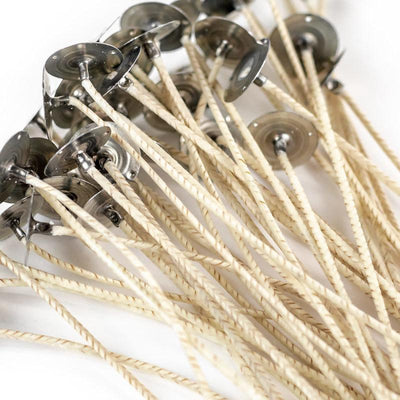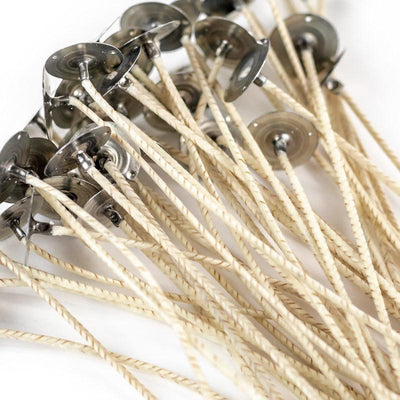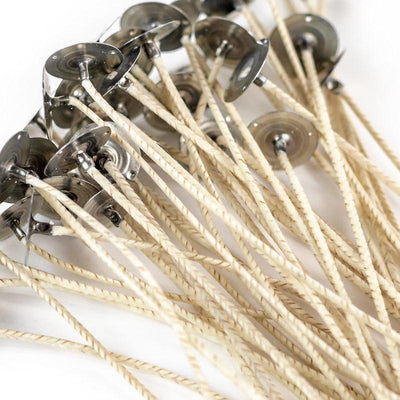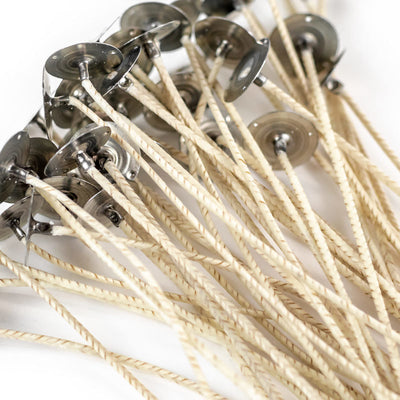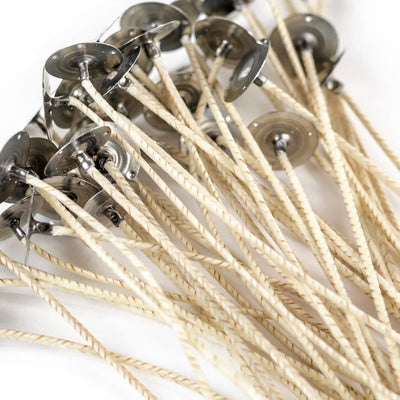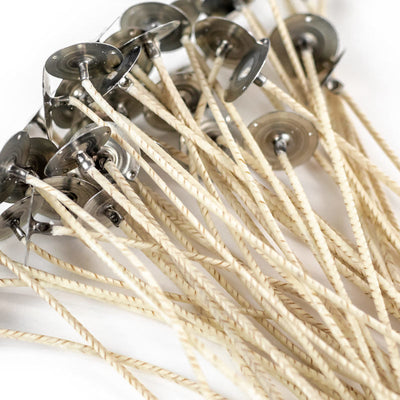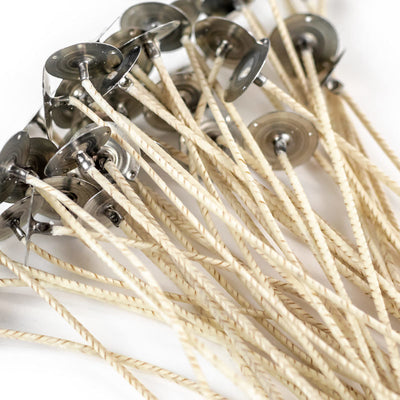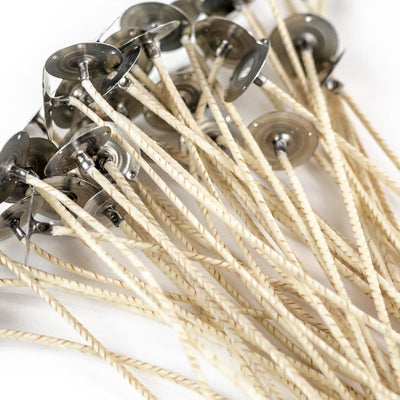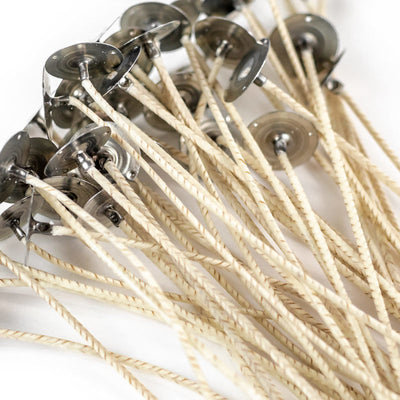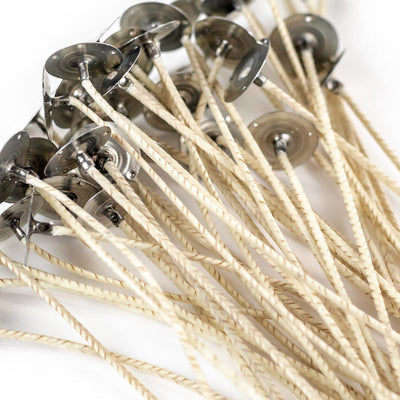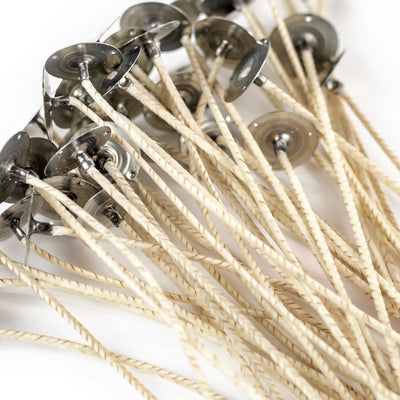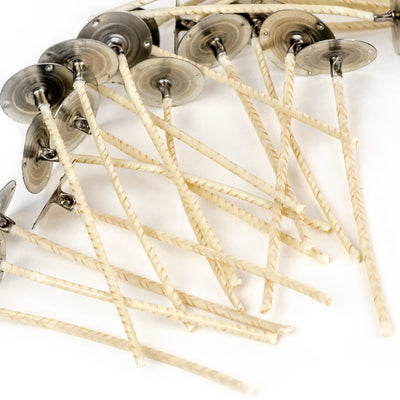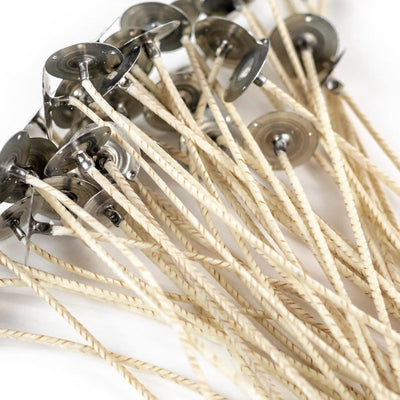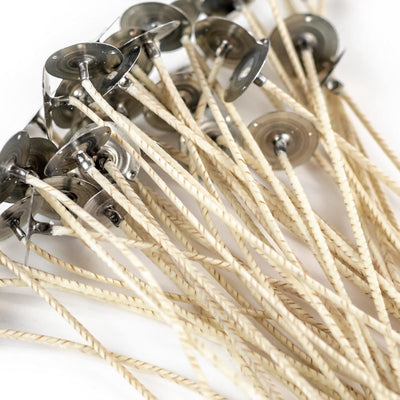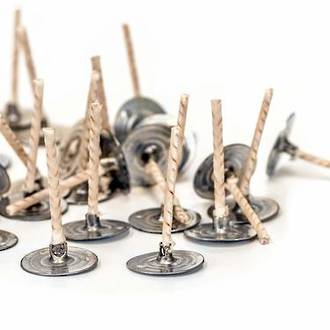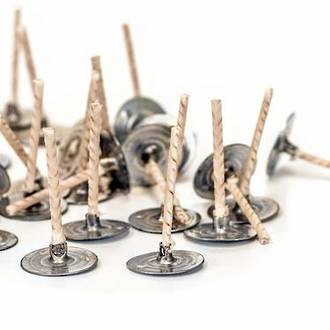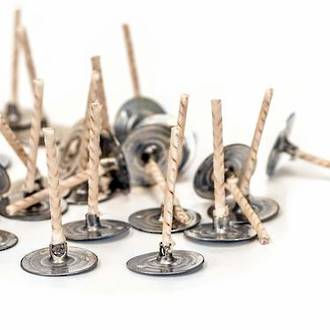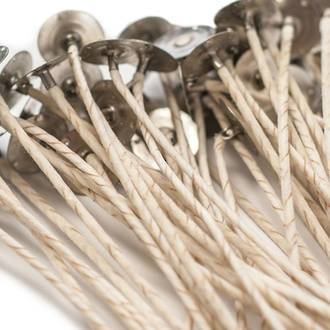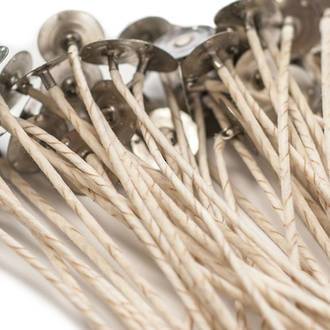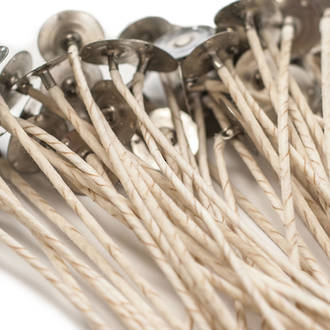Candle Wick
We offer three types of wick:
ECO ( by Wedo)
ECO candle wick is a flat cotton wick braided with thin paper threads that gives the wick a rigid structure without the need for a core. An excellent choice for soy candles, this wick has good burn stability that works well in votives, containers and pillars. ECO wicks also work well with wax blends and low melt-point pa...
Show More
We offer three types of wick:
ECO ( by Wedo)
ECO candle wick is a flat cotton wick braided with thin paper threads that gives the wick a rigid structure without the need for a core. An excellent choice for soy candles, this wick has good burn stability that works well in votives, containers and pillars. ECO wicks also work well with wax blends and low melt-point paraffin waxes.
ECO wicks are very similar to CD types wicks but have less mushrooming and a shorter afterglow.
CD
CD (Stabilo) candle wick is a flat braided cotton wick with paper threads woven into the cotton. The reinforced construction of the wick is designed to ensure a consistent burn with higher fragrance loads, especially with softer, more viscous natural waxes.
The superior rigidity of CD wick allows the wick to stand up straighter for easier pours and keeps the wick upright in a deep melt pool. Note: Any carbon buildup should be removed once the wick is extinguished. CD wicks are lead and zinc-free.
LX
LX Wick is a flat-braided cotton wick with a rigid structure for easy pouring. A great choice for containers, pillars, or votives, this is our recommended wick for paraffin waxes and the new line of EcoSoya Quantum soy waxes. Compared to other wicks, the LX Wick burns with a tighter controlled flame, which helps ensure that glass containers don’t overheat on one side and that pillars don’t ‘tunnel’ or leak out the side of the candle.
Conducting a burn test:
1. Trim the wick to 1/2cm. If testing multiple candles, make sure they are clearly labeled.
2. Place the candles on a clean, flat, heat resistant surface 10 15cm apart. This area should be clearly visible from your workspace as the candles must not be left unattended while lit.
3. Light the candles and record the time. It is critical to keep an eye on the candles while they are burning especially when testing new wicks.
4. After 2 hours record the details of the melt pool and wick appearance. Ideally, the melt pool will achieve the desired diameter* by that point. If it hasn't, the wick is most likely too small. Note any soot or mushrooming on the wick.
5 . After 4 hours record the details of the melt pool and wick, then gently blow out the flame. At this point the melt pool of a well-wicked candle will have achieved the desired diameter* and should be approximately 1cm inch deep. If the wick is mushrooming, the candle is sooting, or the melt pool is substantially deeper than 1cm inch the wick is most likely too large.
6. Allow the candle to cool for at least 5 hours and repeat steps 3, 4, and 5 until the candle is completely burned. The quality of the burn will almost always change during the entire burning of the candle. To make sure you see exactly what your customers will see burn the entire candle before making a wick decision.

